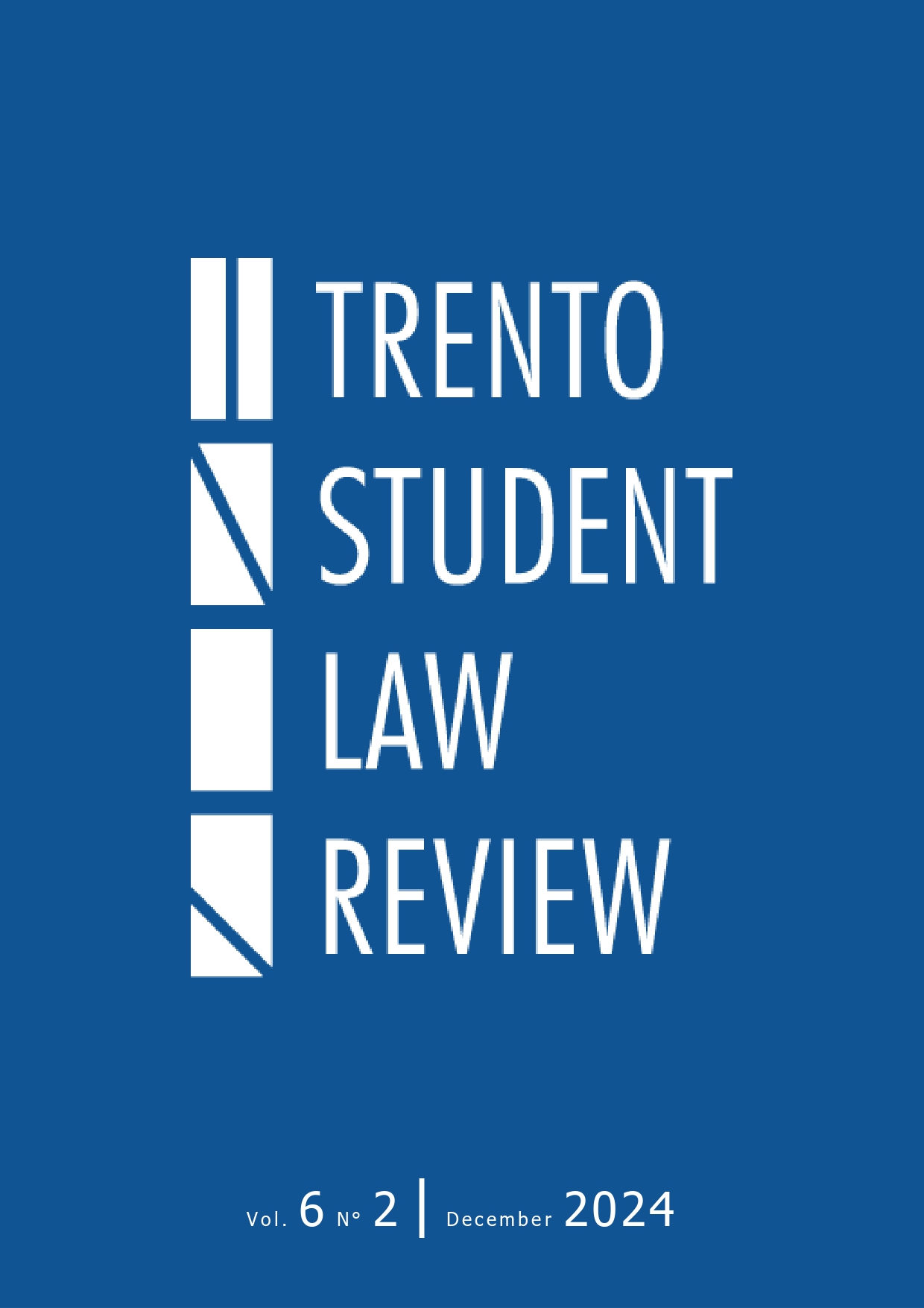Preface to Volume 6, Issue 2
Abstract
Dear Readers,
Seven years ago, a bold idea took shape: a legal journal capable of combining academic depth with practical relevance, fostering open and informed discussion on crucial contemporary legal issues. Today, we proudly present the second issue of Volume 6. This edition not only marks the maturation of our project but also serves as a tangible example of how a vibrant and participatory academic community can enrich the international legal discourse. With thirty-three internal editors, supported by external reviewers and a talented array of authors, our journal continues to grow thanks to the collective commitment of all those involved in the editorial process.
The three articles featured in this issue, while addressing distinct legal domains, share a common thread: the challenge of regulatory and technological complexity in modern law and the pressing need for balanced and innovative solutions to ensure a fair and effective legal system.
The first contribution, "Automated Copyright Enforcement Online: How Platforms Stifle Creativity by Reducing Technological Cost" by Vitantonio Leuzzi, examines how automated copyright enforcement technologies, such as YouTube’s ContentID system, have transformed the landscape of copyright protection. This article highlights the legal and constitutional implications of these systems, emphasizing the delicate balance between protecting creators and safeguarding user freedoms. Leuzzi proposes solutions to ensure fairness and transparency in copyright enforcement within the digital context.
The second article, "CCI v. Sector Regulators: Navigating Jurisdictional Ambiguities for Effective Resolution" by Hammad Siddiqui and Naman Pratap Singh, addresses the jurisdictional overlaps between the Competition Commission of India (CCI) and sector-specific regulatory authorities. By analyzing legislative ambiguities and judicial interpretations, the authors offer insights into fostering collaborative approaches among regulatory bodies to create a coherent and efficient legal framework that protects consumer interests and enhances market competitiveness.
Finally, "Juveniles’ Neuronal Development and Criminal Justice: When Neurosciences Meet Criminal Law" by Nicolò Cappuccitti offers an innovative reflection on the impact of neuroscience on criminal justice policies for minors. Integrating scientific studies on neuronal development with key judicial rulings, such as Roper v. Simmons and Miller v. Alabama, the author demonstrates how recognizing diminished culpability in young offenders can positively influence Italian legal practices.
Though these contributions may appear diverse, they share a common aim: to illuminate the gray areas of law where change is essential to confront the challenges of a rapidly evolving world. Each article exemplifies the crucial role of an interdisciplinary approach, combining legal analysis, technological advancements, and scientific insights to respond to modern complexities.
Publishing legal scholarship is not merely an academic exercise; it is a responsibility toward society, an intellectual contribution that builds bridges between law and everyday life. Our mission is to continue fostering this vital dialogue, driven by a passion for law and the conviction that only open and informed discourse can guide legal progress.
We extend our sincere gratitude to every reader and contributor for their trust and continued support: your dedication is the driving force that makes all of this possible.
Wishing you a pleasant read, sincerly,
Rossella Borella
Editor-in-Chief
Downloads
Published
How to Cite
Issue
Section
License
Copyright (c) 2025 Rossella Borella

This work is licensed under a Creative Commons Attribution-NonCommercial-ShareAlike 4.0 International License.
The copyright on the texts published in the Trento Student Law Review remains with the respective owners. The journal allows authors to retain publishing rights without restrictions.
The Trento Student Law Review is distributed under a Creative Commons license Attribution - Noncommercial - Share-alike 4.0 International (CC BY-NC-SA 4.0).





